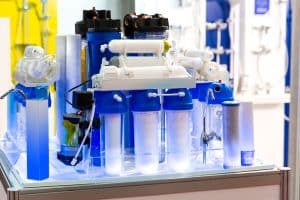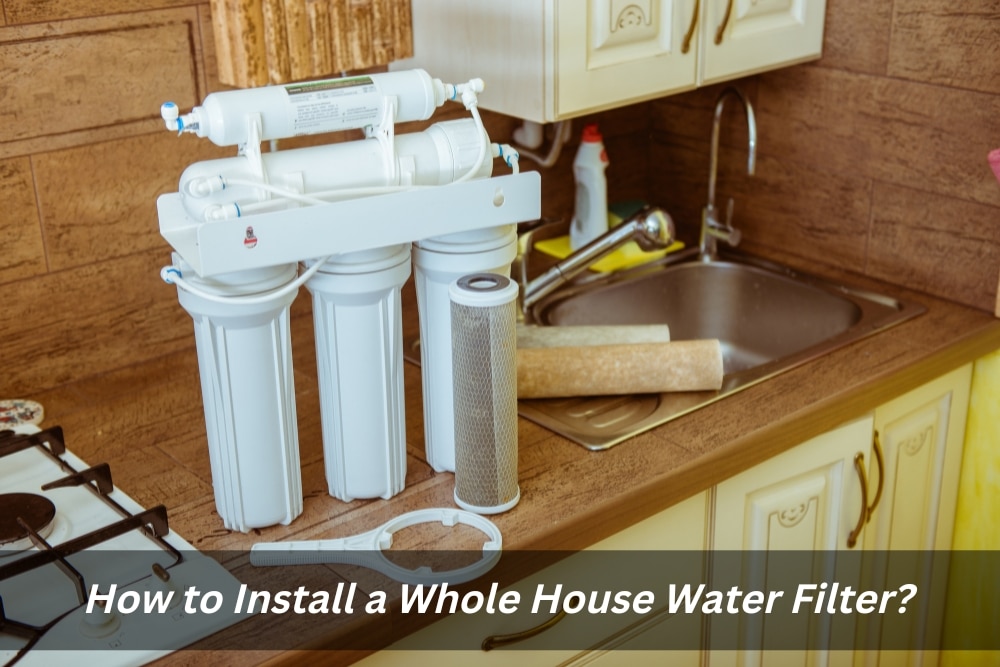How do you install a whole-house water filter?
Installing a whole-house water filter is easy and only requires a few simple steps. You don’t need any special tools or skills and can complete the installation in about an hour.
First, shut off the main water supply to your home by turning off the valves located near your water meter. Then disconnect the old filter system by unscrewing the hoses from the tap. If you have any trouble getting them loose, use the spanner tool that comes with your new filter system.
Next, connect the new filter system to the hoses and tighten them down using hand pressure only–do not use tools! Once everything is connected, turn on the main water supply and check for leaks. If everything looks good, open up a faucet somewhere in your home and let it run for a few minutes so that all of the air can escape from the lines. Congratulations–you’ve just installed a whole house water filter!
5 Best Water Filters in Australia
The five best water filters in Australia are:
- iSpring RCC7
- Aquasana EQ-600
- GE WSSF200RWW
- Kenmore 69122
- Pur Faucet Mount
What are the benefits of installing a whole-house water filter?
There are many benefits of installing a whole-house water filter in your home. Some of these benefits include reducing harmful chemicals like chlorine and lead, as well as removing particulates from drinking water. Whole house filters also help to bring low-pH water supplies back into a neutral range.
In addition, whole-house filters are good for tap water, appliances, and hot water systems. They can filter up to 20 litres of water per minute, making them an ideal solution for large or multiple households. Whole house filters are also low-maintenance and easy to use – simply connect them to your home’s plumbing and you’re good to go!
How do whole-house water filters work?
Water filters come in all shapes and sizes, but the main goal of each one is to remove contaminants from your drinking water. There are several types of filters on the market, but whole-house water filters are some of the most effective at removing lead, copper, bacteria, and other harmful substances from your tap water.
These devices work by creating thousands of gallons of water per day- making them a great option for large households or families who drink a lot of tap water. They’re also relatively inexpensive when compared to other types of water filters and typically require minimal maintenance.
One downside to whole-house water filters is that they can be quite expensive- usually costing $1,155 or more per unit. However, when you consider the benefits they provide (namely reducing exposure to harmful contaminants), they can be seen as an investment in the health and safety of your family.
Whole house water filters are installed under sinks or in showers and use a low pH system to neutralize acidity. This helps them remove chlorine and other harmful substances from drinking water. They’re also able to filter out particles that other methods like reverse osmosis systems can’t get rid of.
Good Health Begins With Good Water
Water is the most important element of life. It’s no wonder that good health begins with good water. In order to maintain our health, we need to drink plenty of fluids each day, and water is the best way to achieve this goal. Not only does drinking water help us stay hydrated, but it also provides many other benefits for our bodies.
When it comes to our health, we can’t overlook the importance of drinking plenty of fluids each day. Water is essential for life, and it’s one of the best ways to stay hydrated and healthy. Not only does water provide us with essential hydration, but it also has a wealth of other benefits for our bodies.
What are the different types of whole-house water filters?

There are three types of whole-house water filters: whole-house Calcite, whole system and under-the-sink. The most popular type is the whole-house filter, which can filter up to 20 litres a minute. This means you don’t have to worry about running out of filtered water.
Whole house water filters also filter for chlorine and other harmful chemicals or microorganisms like bacteria and viruses, which are more common than people think. All of these contaminants can be harmful to your health if consumed over time.
The next type of whole-house water filter is the whole-system filter. It’s more expensive than the other two options, but it does a better job of filtering out all harmful contaminants from your water supply. If you’re looking for the best possible protection for yourself and your family, then this is the type of filter you need.
Finally, there’s the under-sink option. This is a smaller-scale version that’s good for apartments or small homes where space is limited. It doesn’t have as many features as the other two types of filters, but it still eliminates chlorine and other harmful chemicals from your drinking water.”
How do you choose the right whole-house water filter for your home?
There are a lot of different whole-house water filters on the market, so it can be difficult to choose the right one for your home. You need to consider what type of water you have and what kind of contaminants you want to remove.
Municipal water supplies often contain bacteria and parasites that can cause health problems, so it’s important to filter them out. If you have bore water, you’ll need reverse osmosis or a whole-house filter to purify and soften the water before drinking it.
It’s also important to select the right size filter for your home. The whole house filter can reliably filter up to 20 litres of water per minute, which is great for taps, hot water systems and appliances.
Take a water analysis to see which system is best for your needs, then choose the option that best fits your home.
What are the maintenance requirements for whole-house water filters?
There are no maintenance requirements for the LWNCS. It is a one-time purchase that helps to bring low-pH water supplies back into a neutral range. This filter is better for taps, hot water systems and appliances because they’re only drinking pure water without chemicals or other substances.
How often do you need to replace the filter in a whole house water filter?
It is important to replace the filter in your whole house water filter on a regular basis. This will help ensure that your water is clean and free of harmful chemicals and microorganisms. How often you need to replace the filter will depend on a variety of factors, including the pH level of your water and how much water you use.
Most whole-house filters can handle up to 20 litres of water per minute, so they are ideal for appliances and taps. If you have an under-sink filter, it will need to be replaced every 6 months. If you have a shower filter, it needs to be replaced every 12 months. The whole filter itself should be replaced every 4-6 months.


